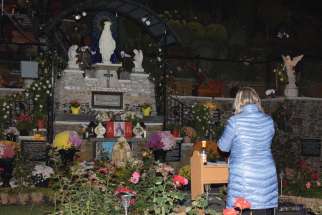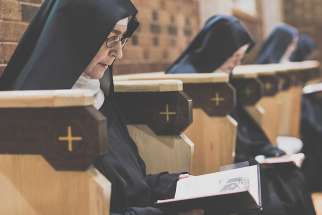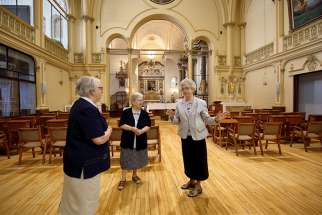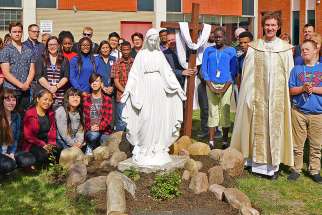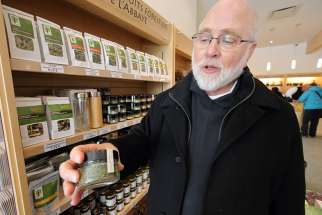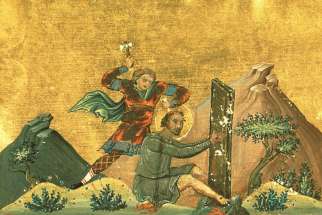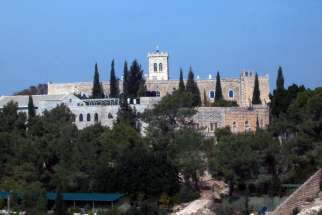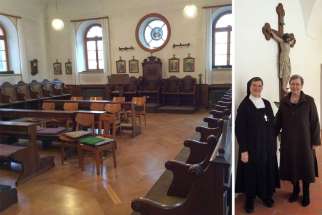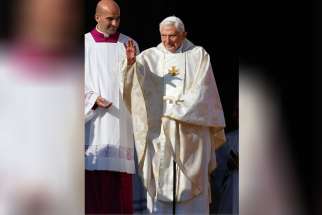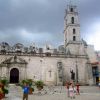Marian shrine draws faithful following
Every Saturday a group of people gather at the Marian Shrine of Gratitude in northwest Toronto to pray the rosary.
Speaking Out: My weekend in a monastery
Quebec Ursulines leave 17th-century monastery, ending a 400-year era
EDMONTON – Two life-sized statues of Mary and Joseph that stood outside an Edmonton monastery for more than 90 years are now welcoming visitors to St. Joseph Catholic High School.
SAINT-JEAN-DE-MATHA, Quebec – When the Order of Cistercians of the Strict Observance left Oka, Quebec, to escape suburban sprawl, they left behind an oversized, aging building.
VATICAN CITY – The relics of Syrian St. Elian, which originally were thought to have been destroyed by members of the Islamic State militia, have been found amid the rubble of the desecrated Mar Elian Church in Qaryatain, Syria.
Jerusalem church condemns vandalism of graves at Salesian monastery
JERUSALEM - The Latin Patriarchate of Jerusalem condemned the vandalism of seven graves at the Salesians of Don Bosco Beit Jamal monastery outside of Jerusalem and called for more education for respect toward people of different religious backgrounds.
BEUERBERG, Germany - Cold winter light is streaming through the ancient windows of Beuerberg Abbey. It plays on the wood of the empty choir stalls, shimmers on the bronze hand bell of the prioress. Everything is quiet and ready for the next prayer.
Pope Benedict has no regret, doubt about decision to retire, aide says
VATICAN CITY - Retired Pope Benedict XVI has never doubted or regretted his decision to resign, knowing it was the right thing to do for the good of the Church, said Archbishop Georg Ganswein, prefect of the papal household and personal secretary to the retired pope.
No hiding Havana’s Catholic roots
HAVANA, CUBA - In Old Havana, time seems to stand still. Amidst the stunning architecture and vintage cars rolling along cobblestone streets, visitors are shown a glimpse of a different world at this UNESCO World Heritage site.
But what is striking about the old city is the many signs of Catholicism in the capital of one of the few remaining communist nations in the world. It is evident immediately upon arrival in Havana. Driving past the bay, we saw the white marble Christ of Havana statue on a hilltop. There was no stopping, however, as the 20-metre work of art was under construction.
Then we made our way into the city, down the narrow walkways into the heart of Old Havana.What do we pass but a stone cross towering overhead, smack dab in the middle of the sidewalk — a sign of what’s to come.
Our tour began at the Basilica and Monastery of St. Francis of Assisi. Built at the tail end of the 16th century for the Franciscan community, its religious use was discontinued in the mid-1760s after Cuba reverted to Spanish rule following a brief two years under British rule. Attached to a 40-metre bell tower, the basilica functions today as a museum and concert hall. Inside, there is a glass statue of Jesus that was given to former Cuban president Fidel Castro by Blessed Mother Teresa, our tour guide tells us.
Walking into the picturesque “Hostal Valencia,” a rustic bed and breakfast established by Spanish settlers, there is a large portrait of Castro (or El Comandante, as locals call him). And less than a half-metre away, a small illuminated statue of Mother Mary holding baby Jesus in a glass case caught my eye. To an outsider, it seems contradictory to have these two symbols so close. Then again, the Blessed Virgin and the dictator both have devotees in this communist state. The city’s charm is encapsulated here, with vines growing from the upper balcony of a large courtyard where visitors eat at tables on the ground level.
Continuing along our route, El Templete comes into view, a tiny neoclassical chapel partially covered by a massive ceiba tree. It was erected on the spot where Havana’s first Mass was held under the same kind of tree in the 1500s. Every Nov. 16, Habaneros (residents of Havana) celebrate the anniversary of the first Mass along with the first town council of San Cristobal de la Habana.
A little farther along is the Museum of the City, which used to be the Captain General’s Palace, seat of the Spanish governments on the island from 1791 to 1898. From 1899 until 1902, the U.S. military governors were based here, and during the first two decades of the 20th century the building briefly became the presidential palace. Half of it was used for official business and the other half as a residence. But before it served these purposes, this was the site of Havana’s original church, the Parroquial Mayor, with relics from its past on display in the lower chambers. Among these relics are an old pew, a Gospel adorned in gold, a monstrance decorated in coral and a sculpture of Jesus wearing a crown of thorns.
Fittingly enough, the finale was the iconic cathedral of Havana that has not one name, but two. Officially called the Cathedral of the Virgin Mary of the Immaculate Conception, it’s better known as the Cathedral of St. Christopher, Havana’s patron saint. Before being shipped off to the cathedral in Seville, Spain, the bones of Christopher Columbus lay here. On either side of the baroque facade are bell towers, one of which is visibly larger, creating an intentional asymmetry. Tourists shuffle about the square outside, staring in awe at the grandiose testament to the faith.
Amidst the multitude of sights in Old Havana, such as the Ambos Mundos Hotel where American writer Ernest Hemingway penned many of his classics, and Morro Castle that guards the entrance to Havana Bay, Catholic icons are scattered. They play a prominent role in giving Habana Vieja its unique character.
Six months after Pope Benedict XVI visited Cuba and spoke out for stronger religious freedom for Catholics, it was interesting to see the religiosity inherent in the city’s many features. Indeed, it is a country of contrasts. Although the anti-religious views of Marxism have clearly had a powerful impact on the country, Cuba’s Catholic roots remain.


